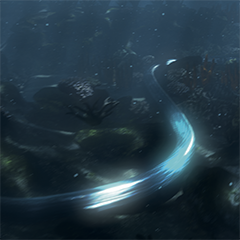Electrode: sparking action on subsea cable failures
Thirty years ago, there was not a single megawatt of offshore wind capacity on the planet; now, there are more than 29GW installed globally, and offshore wind is seen as a vital clean energy source with which to tackle climate change and reduce our carbon footprint. The next 30 years will see an even more spectacular rate of expansion with 1,400GW credibly achievable by 2050.
There is an ‘if’ and a ‘but’ coming, though: such rapid growth in capacity will only be possible if the industry is sitting upon a much more reliable subsea cable network than today. Tomorrow’s cables will need to cope with more wind power and achieve reliability over longer distances, too, as operations push further and deeper offshore. Looking ahead to the future, we will also see the commercialisation of floating wind platforms using dynamic cables, a switchover to high-voltage direct current cables (HVDC) across the offshore wind industry, offshore hydrogen charging stations coming online, and the meshing all of these into the ‘Supergrid’ of the future.
That is why stabilising and reducing cable failure rates is one of the crucial innovation challenges for the wind industry in the here and now. Cables have proven to be somewhat of an Achilles heel to date, accounting for 75-80% of insurance claims. It is not uncommon for a single outage to result in costs exceeding £10 million in lost energy output and repairs.
Electrode: sparking action on subsea cable failures
Thirty years ago, there was not a single megawatt of offshore wind capacity on the planet; now, there are more than 29GW installed globally, and offshore wind is seen as a vital clean energy source with which to tackle climate change and reduce our carbon footprint. The next 30 years will see an even more spectacular rate of expansion with 1,400GW credibly achievable by 2050.
There is an ‘if’ and a ‘but’ coming, though: such rapid growth in capacity will only be possible if the industry is sitting upon a much more reliable subsea cable network than today. Tomorrow’s cables will need to cope with more wind power and achieve reliability over longer distances, too, as operations push further and deeper offshore. Looking ahead to the future, we will also see the commercialisation of floating wind platforms using dynamic cables, a switchover to high-voltage direct current cables (HVDC) across the offshore wind industry, offshore hydrogen charging stations coming online, and the meshing all of these into the ‘Supergrid’ of the future.
That is why stabilising and reducing cable failure rates is one of the crucial innovation challenges for the wind industry in the here and now. Cables have proven to be somewhat of an Achilles heel to date, accounting for 75-80% of insurance claims. It is not uncommon for a single outage to result in costs exceeding £10 million in lost energy output and repairs.
To read the full content,
please download the PDF below.



























